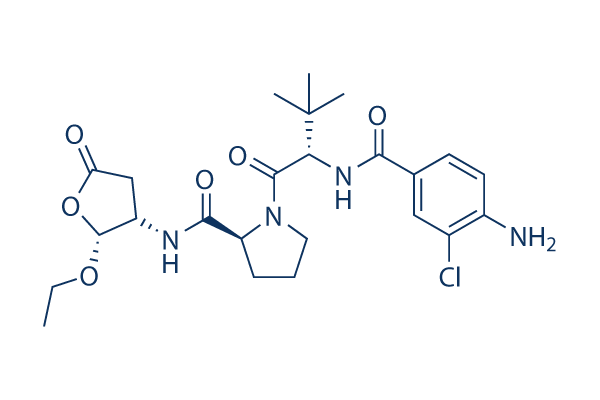We designed interaction profiles for each gene by includ ing more gene drug interaction data, then assessed modularity by clustering. The REMc algorithm objectively specified the number of clusters and provided an indication of cluster quality. We employed the GOid z system to quantify total enrichment of gene ontology functional informa tion within clusters. GOTermFinder, was utilized to recognize precise terms associated with every cluster in addition to the representative genes. All clusters have been enriched for functional data and many have been linked with unique GO terms. We also note that some functionally relevant genes appeared in numerous clusters, despite the fact that they exerted related results on Yor1 F biogenesis. This suggests that though they cooperate to find out the fate of Yor1 F, they will perform vary entially in other cellular contexts.
selleck inhibitor Other explanations for that physical appearance in different clusters of genes acknowledged to become functionally associated comprise of above estimation of the amount of clusters, measurement error, plus the gene specific func tional relevance of specific gene interaction profiles picked for clustering. Validation of Erv14 being a cargo precise sorting issue for Yor1 Cluster 2 0. 1 one contained genes previously shown to function cooperatively in protein transport through the secretory pathway. Namely, Sys1, Mak3, and Mak10 cooperate while in the recruitment within the ARF like GTPase, Arl3, to the Golgi to manage vesicular trans port.
Provided the clustering of those gene interaction profiles Enzastaurin with Erv14, which can function as being a cargo adap tor for enrichment of newly synthesized proteins into ER derived transport vesicles, we suspected they may function inside a frequent pathway, with Erv14 acting in an upstream compartment distinct from your many others during the cluster. Furthermore, we observed oligomycin sensitivity to become far more strongly dependent on ERV14 in the context of wild variety Yor1 than Yor1 F. This difference raised the likelihood that Erv14 pro motes capture of wild kind Yor1 into ER derived trans port vesicles additional effectively than it does to the misfolded Yor1 F substrate. According to this hypoth esis, reduced recognition of the misfolded Yor1 F by Erv14 would lessen the phenotypic impact within the erv14 0 null allele on oligomycin sensitivity in an allele unique method.
We tested Erv14 function by in vitro reconstitution of COPII vesicle formation, evaluating capture of Yor1 in the presence or absence of Erv14. Indeed, ERV14 deletion specifically diminished capture of Yor1, leaving a manage cargo, Sec22, unaffected. Yor1 F capture was weak regardless of ERV14 standing. Therefore the gene drug  interac tion in between erv14 and oligomycin can be explained by a physical interaction in between Erv14 and Yor1 that pro motes ER export. Accordingly, our vesicle budding assay exposed no defects connected with capture into ER derived vesicles in sys1 0, arl3 0, mak3 0, and mak10 0 strains.
interac tion in between erv14 and oligomycin can be explained by a physical interaction in between Erv14 and Yor1 that pro motes ER export. Accordingly, our vesicle budding assay exposed no defects connected with capture into ER derived vesicles in sys1 0, arl3 0, mak3 0, and mak10 0 strains.
PCNA signal
PCNA is a member of the so called DNA
